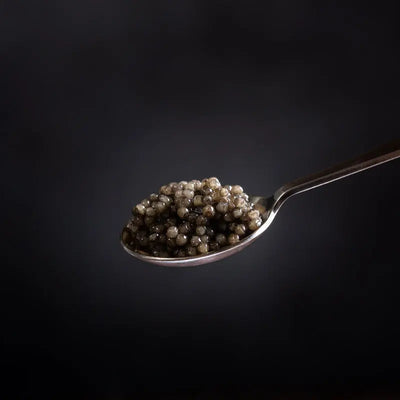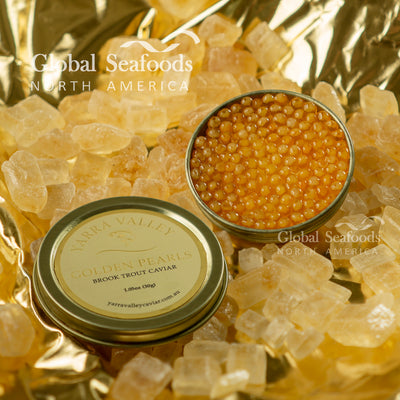+Shop Now
+Categories
- Abalone
- Ahi Tuna
- Alaskan King Crab Legs
- Alaskan Pollock
- Alaskan Sockeye Salmon
- Albacore Tuna
- Anchovy
- Anxiety Relief
- appetizer
- Atlantic Salmon
- Beluga Caviar
- Best Sushi
- black caviar
- black cod
- Blue crabs
- Bluefin Tuna
- Brain Function
- Branzino
- breakfast
- Calamari
- caviar
- Caviar Recipes
- Chef Knives
- Chilean Sea Bass
- Clams
- cocktail caviar
- Cod
- Coho Salmon Caviar
- collagen
- Cooking Methods
- crab
- Crab Balls
- Crab Cakes
- Crab claws
- crab meat
- Crab Recipes
- culinary tips
- decline-sturgeon
- Diver Scallops
- Dover Sole
- Dry Aged Fish
- Dungeness Crab
- Dungeness crab clusters
- Dungeness Crab Legs
- Exotic Shellfish Sampler
- Fish and Seafood
- fish oil
- Fish Sauce
- flat fish
- FLOUNDER FISH
- Focus
- Fresh Seafood Delivery
- Fresh Wild Alaskan Salmon
- Geoduck
- Gooseneck Barnacles
- Gourmet Seafood Platter
- haddock
- halibut
- Halibut Recipes
- hamachi
- Hamachi Recipe
- health
- healthy eating
- Ikura
- Japanese restaurants
- Jonah crab
- Jumbo Sea Scallops
- Kaluga Caviar
- kelp
- king crab
- King Crab Legs
- King Salmon
- kitchen
- Lingcod
- Live King Crab
- Live Lobsters for Sale
- Live Scallops
- Live seafood
- lobster
- Lobster Tail
- luxury food
- mahi mahi
- Marine Collagen
- Mollusk
- Monkfish
- Mussels
- New
- Nutrition
- octopus
- Opah
- Ora King Salmon
- Osetra Caviar
- Ossetra Sturgeon Caviar
- oysters
- Pacific Cod
- Pacific Hake
- Pacific Halibut
- Pacific Ocean
- Pacific Whiting
- Pacific Whiting Recipe
- Paddlefish Caviar
- Petite Oysters
- Petrale Sole
- Poke Tuna
- Pollock
- Pregnancy
- Premium Caviar Selection
- Recipe
- red caviar
- Red Crab
- rock fish
- Rockfish
- Rockfish Recipes
- sablefish
- Sablefish (Black Cod) Recipes
- salmon
- Salmon Caviar
- Salmon lox
- Salmon Poke
- Salmon Recipes
- salmon roe
- Sardines
- Sashimi
- Sashimi-Grade Tuna
- Scallop
- scallops
- Scallops Recipe
- Sea Urchi Recipe
- sea urchin
- Sea Urchin Sushi
- sea weed
- Seafood
- Seafood Dishes
- Seafood Market
- Seafood Recipe
- Seafood Restaurants
- sevruga caviar
- shellfish
- Shrimps & Prawns
- Silver Salmon
- Smoked
- Smoked Salmon
- Smoked Tuna
- Snail Caviar
- Snapper Recipe
- snow crab
- Sole & Flounder Recipes
- Squid
- Steelhead
- Sturgeon Caviar
- Sustainable Seafood Choices
- Swordfish
- Tilapia
- Tilapia Fish
- Tobiko
- Trout
- tuna
- Tuna Recipe
- weathervane scallops
- white fish
- White Sturgeon
- White Sturgeon Caviar
- Whiting Fish
- Wild Caught Shrimp
- Yellowfin Tuna
- Yellowtail snapper
How to Enjoy Caviar Served with Blinis and Champagne
January 03, 2025

Caviar Served with Blinis and Champagne
Caviar has long been a symbol of luxury, indulgence, and refined taste. When paired with the soft texture of blinis and the effervescence of Champagne, it creates a culinary experience that’s second to none. Whether you’re hosting a lavish gathering or treating yourself to an intimate evening, this classic combination is sure to impress.
In this guide, we’ll explore the nuances of serving caviar with blinis and Champagne, the best types of caviar for pairing, and expert tips for elevating your tasting experience.
Why Caviar, Blinis, and Champagne Are a Perfect Trio
Caviar, blinis, and Champagne complement each other in a way that enhances their individual qualities.
1. Balancing Flavors
The delicate saltiness of caviar is perfectly balanced by the neutral flavor of blinis and the crisp, acidic notes of Champagne.
2. Textural Harmony
The velvety pearls of caviar, the pillowy softness of blinis, and the effervescent bubbles of Champagne create a multi-dimensional sensory experience.
3. A Celebration of Elegance
This pairing exudes sophistication, making it ideal for celebrations, weddings, or intimate dinners.
Quote: “Caviar and Champagne are the epitome of luxury, creating a taste that lingers long after the last bite,” says Michelin-starred chef Alain Ducasse.
Choosing the Best Caviar for Your Pairing
Not all caviar is created equal. Selecting the right type is crucial for achieving the ultimate flavor harmony.
1. Beluga Caviar
- Flavor Profile: Rich, creamy, and buttery.
- Pairing Tip: Pairs exceptionally well with vintage Champagne due to its subtle flavors.
- Shop Now: Beluga Caviar
2. Ossetra Caviar
- Flavor Profile: Nutty and robust with a firm texture.
- Pairing Tip: Ideal for pairing with dry, brut Champagne.
- Shop Now: Ossetra Sturgeon Caviar
3. Kaluga Caviar
- Flavor Profile: Similar to Beluga but more affordable.
- Pairing Tip: Complements sweeter Champagne or sparkling wine.
- Shop Now: Kaluga Caviar
4. Sevruga Caviar
- Flavor Profile: Bold and briny, with smaller pearls.
- Pairing Tip: Matches well with rosé Champagne.
- Shop Now: Sevruga Sturgeon Caviar
How to Serve Caviar, Blinis, and Champagne
1. Preparing the Blinis
- Warm the blinis in a non-stick skillet for a few seconds on each side.
- Serve warm to complement the chilled caviar.
2. Presenting the Caviar
- Use a mother-of-pearl spoon to avoid altering the delicate flavor of the caviar.
- Place the caviar on a bed of crushed ice to maintain its freshness.
3. Pairing with Champagne
- Choose a dry or brut Champagne for a clean palate.
- Serve in flutes to preserve the bubbles and enhance the experience.
Tips for Elevating Your Tasting Experience
Use Quality Ingredients
Invest in premium caviar like Wild Sturgeon Black Caviar and freshly made blinis for the best results.
Garnish Strategically
Enhance the flavors with:
- Crème fraîche
- Chopped chives
- Finely diced shallots
Enjoy the Simplicity
Let the natural flavors of the caviar and Champagne shine. Avoid overpowering the dish with heavy seasonings.
FAQs About Serving Caviar, Blinis, and Champagne
Q: How much caviar should I serve per person?
A: Plan for 1–2 ounces of caviar per person for an appetizer.
Q: Can I make blinis ahead of time?
A: Yes, prepare them a few hours in advance and reheat just before serving.
Q: What Champagne works best with caviar?
A: Opt for brut or extra-brut Champagne for a crisp and clean pairing.
Where to Buy the Best Caviar Online
Explore a curated selection of premium caviar from Global Seafoods:
Discover More on YouTube
For more tips on serving caviar and creating memorable pairings, visit our Global Seafoods YouTube Channel.
Conclusion
Caviar served with blinis and Champagne is more than a meal—it’s an experience. By selecting the finest caviar, preparing your accompaniments with care, and choosing the perfect Champagne, you can create a moment of indulgence that your guests will never forget.
Ready to elevate your culinary repertoire? Shop premium caviar from Global Seafoods today and host your own luxurious pairing.
Shop Now:
Experience the epitome of luxury dining today!
Related Products
Share:
Also in News

How to Make Sea Bream Sushi With Dry-Aged Tuna & Crab Roll — Step-by-Step With Chef Joshua
December 07, 2025
A complete guide to making Sea Bream sushi at home, including filleting, curing, slicing, and building a Dry-Aged Tuna & Crab sushi roll. Chef Joshua shares professional tips for restaurant-quality results.

Boiled Crab for Game Night: Everything You Need for a Perfect Seafood Party
June 27, 2025
Take your game night to the next level with a Boiled crab party. Learn the best recipes, cooking tips, and hosting hacks for a memorable seafood feast.

Boiled Crab for Date Night: A Romantic Guide to the Perfect Seafood Feast
June 27, 2025
Make your next date night unforgettable with a romantic Boiled crab experience. This guide covers everything you need to know, from ambiance to the best crab varieties.
+Shop Now
+Categories
- Abalone
- Ahi Tuna
- Alaskan King Crab Legs
- Alaskan Pollock
- Alaskan Sockeye Salmon
- Albacore Tuna
- Anchovy
- Anxiety Relief
- appetizer
- Atlantic Salmon
- Beluga Caviar
- Best Sushi
- black caviar
- black cod
- Blue crabs
- Bluefin Tuna
- Brain Function
- Branzino
- breakfast
- Calamari
- caviar
- Caviar Recipes
- Chef Knives
- Chilean Sea Bass
- Clams
- cocktail caviar
- Cod
- Coho Salmon Caviar
- collagen
- Cooking Methods
- crab
- Crab Balls
- Crab Cakes
- Crab claws
- crab meat
- Crab Recipes
- culinary tips
- decline-sturgeon
- Diver Scallops
- Dover Sole
- Dry Aged Fish
- Dungeness Crab
- Dungeness crab clusters
- Dungeness Crab Legs
- Exotic Shellfish Sampler
- Fish and Seafood
- fish oil
- Fish Sauce
- flat fish
- FLOUNDER FISH
- Focus
- Fresh Seafood Delivery
- Fresh Wild Alaskan Salmon
- Geoduck
- Gooseneck Barnacles
- Gourmet Seafood Platter
- haddock
- halibut
- Halibut Recipes
- hamachi
- Hamachi Recipe
- health
- healthy eating
- Ikura
- Japanese restaurants
- Jonah crab
- Jumbo Sea Scallops
- Kaluga Caviar
- kelp
- king crab
- King Crab Legs
- King Salmon
- kitchen
- Lingcod
- Live King Crab
- Live Lobsters for Sale
- Live Scallops
- Live seafood
- lobster
- Lobster Tail
- luxury food
- mahi mahi
- Marine Collagen
- Mollusk
- Monkfish
- Mussels
- New
- Nutrition
- octopus
- Opah
- Ora King Salmon
- Osetra Caviar
- Ossetra Sturgeon Caviar
- oysters
- Pacific Cod
- Pacific Hake
- Pacific Halibut
- Pacific Ocean
- Pacific Whiting
- Pacific Whiting Recipe
- Paddlefish Caviar
- Petite Oysters
- Petrale Sole
- Poke Tuna
- Pollock
- Pregnancy
- Premium Caviar Selection
- Recipe
- red caviar
- Red Crab
- rock fish
- Rockfish
- Rockfish Recipes
- sablefish
- Sablefish (Black Cod) Recipes
- salmon
- Salmon Caviar
- Salmon lox
- Salmon Poke
- Salmon Recipes
- salmon roe
- Sardines
- Sashimi
- Sashimi-Grade Tuna
- Scallop
- scallops
- Scallops Recipe
- Sea Urchi Recipe
- sea urchin
- Sea Urchin Sushi
- sea weed
- Seafood
- Seafood Dishes
- Seafood Market
- Seafood Recipe
- Seafood Restaurants
- sevruga caviar
- shellfish
- Shrimps & Prawns
- Silver Salmon
- Smoked
- Smoked Salmon
- Smoked Tuna
- Snail Caviar
- Snapper Recipe
- snow crab
- Sole & Flounder Recipes
- Squid
- Steelhead
- Sturgeon Caviar
- Sustainable Seafood Choices
- Swordfish
- Tilapia
- Tilapia Fish
- Tobiko
- Trout
- tuna
- Tuna Recipe
- weathervane scallops
- white fish
- White Sturgeon
- White Sturgeon Caviar
- Whiting Fish
- Wild Caught Shrimp
- Yellowfin Tuna
- Yellowtail snapper
Shop Now
Main
News & Updates
Sign up to get the latest on sales, new releases and more…
© 2025 Global Seafoods North America.










